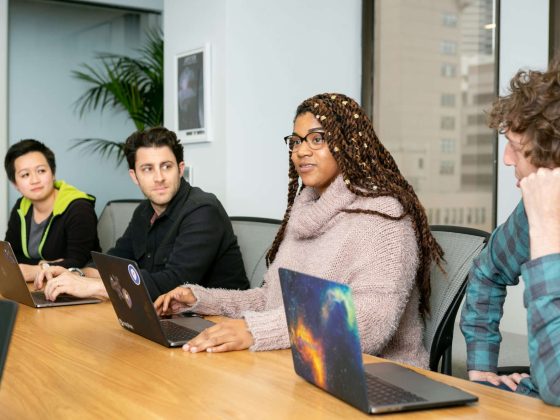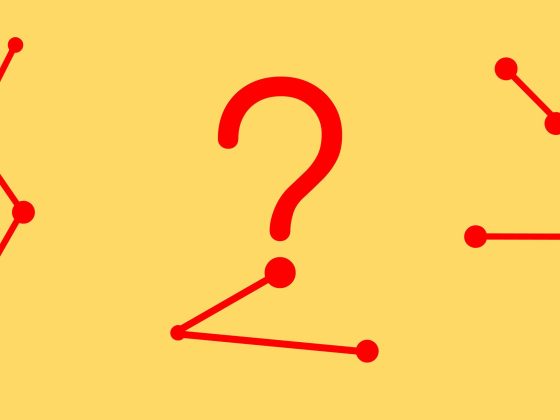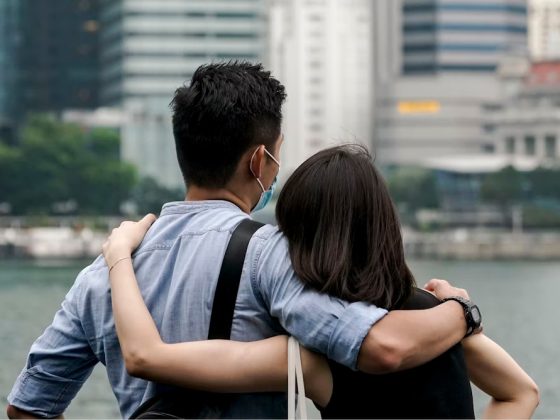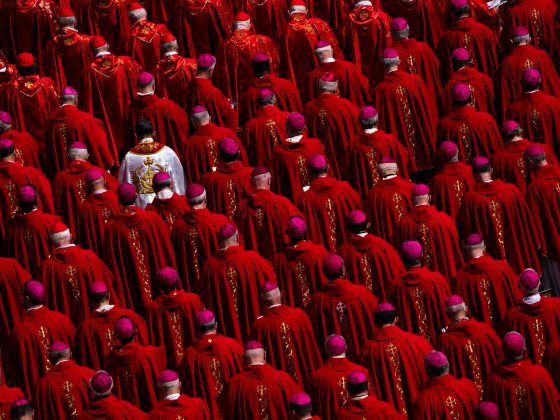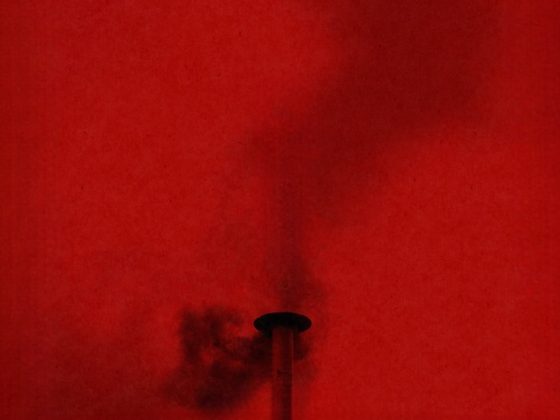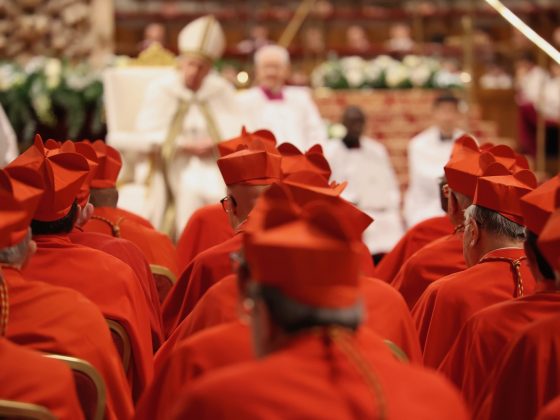Social distancing and wearing a mask prevent you from spreading COVID-19, but they also protect you from getting it, two experts explain in a new video discussion of coronavirus transmission.
A range of new research on face coverings shows that the risk of infection to the wearer decreases by 65%, says Dean Blumberg, chief of pediatric infectious diseases at the University of California, Davis Children’s Hospital.
“PEOPLE WHO SAY, ‘I DON’T BELIEVE MASKS WORK,’ ARE IGNORING SCIENTIFIC EVIDENCE. IT’S NOT A BELIEF SYSTEM. IT’S LIKE SAYING, ‘I DON’T BELIEVE IN GRAVITY.’
“On the issue of masks, I’d like to restart—because we’ve learned a lot,” Blumberg says. “We’ve learned more due to research and additional scientific evidence. What we know now is that masks work and are very important.”
Blumberg and William Ristenpart, a professor of chemical engineering, appeared on a livestream devoted to explaining how the coronavirus spreads and how to prevent transmission.
In their comments and answers to questions from viewers, Blumberg and Ristenpart repeatedly made the point that research continues to support the fundamental methods to prevent spreading COVID-19: Wear masks, maintain social distance, and keep social interactions outdoors whenever possible.
HOW MASKS WORK TO STOP COVID-19’S SPREAD
There are two primary methods of coronavirus transmission, Blumberg and Ristenpart explain.
The first is via droplets a carrier expels, which are about one-third the size of a human hair but still large enough that we can see them. Masks create an effective barrier against droplets.
“Everyone should wear a mask,” Blumberg says. “People who say, ‘I don’t believe masks work,’ are ignoring scientific evidence. It’s not a belief system. It’s like saying, ‘I don’t believe in gravity.’
“YOU’RE BEING AN IRRESPONSIBLE MEMBER OF THE COMMUNITY IF YOU’RE NOT WEARING A MASK. IT’S LIKE DOUBLE-DIPPING IN THE GUACAMOLE. YOU’RE NOT BEING NICE TO OTHERS.”
“People who don’t wear a mask increase the risk of transmission to everyone, not just the people they come into contact with. It’s all the people those people will have contact with. You’re being an irresponsible member of the community if you’re not wearing a mask. It’s like double-dipping in the guacamole. You’re not being nice to others.”
The second major coronavirus transmission method is via the aerosol particles we expel when we talk. Those are about 1/100th the size of a human hair and are more difficult to defend against. Social distancing and staying outdoors, where there is more air flow, are helpful, Blumberg and Ristenpart say.
“Studies in laboratory conditions now show the virus stays alive in aerosol form with a half-life on the scale of hours. It persists in the air,” Ristenpart says. “That’s why you want to be outdoors for any social situations if possible. The good air flow will disperse the virus. If you are indoors, think about opening the windows. You want as much fresh air as possible.”
This is why, he says, places like bars are particularly hazardous for aerosols, on top of the likelihood of minimal distancing. “The louder you speak, the more expiatory aerosols you put out,” he says.
OTHER CORONAVIRUS TRANSMISSION POINTERS
Plexiglass and cubicles as protection? The plexiglass shields in stores and restaurants only help somewhat. The same is true for office cubicles. But after a lengthy time, transmission is possible from aerosols if the air flow is not good, Blumberg and Ristenpart say.
“The way to think about that is to think about smells,” Ristenpart says. “If the person on the other side of a cubicle or plexiglass is wearing perfume, eventually, you’ll smell it. The aerosol particles are small enough to travel on air much like aromas. That’s why air flow is so important, along with other actions like wearing masks and social distancing.”
“WE DO KNOW SOCIAL DISTANCING REDUCES THE RISK OF TRANSMITTING THE VIRUS BY 90%, AND WEARING MASKS DECREASES THE RISK BY 65%.
Time of exposure matters: “If you’re going past someone very quickly in a grocery store,” Blumberg says, “the risk of getting infected is very low. It’s really lingering and talking that does it.”
Ristenpart adds: “It’s really important to know that just because you’re standing 6 feet or 7 feet away, if you have a prolonged conversation, there is still a risk. These aerosols can be carried along on weak air currents.”
Surface contact is less of a threat: There is no precise research on the prevalence of transmission from hand contact.
“For ethical reasons, we can’t contaminate a bunch of people’s hands, then have them touch their faces or other people’s faces,” Ristenpart says. “But backtracking infections and following transmission events shows surfaces or hand contacts are not a primary method.”
Which brings researchers back to droplets and aerosol particles as the primary methods of transmission.
“We know from other coronaviruses that this is primarily a respiratory transmitted illness,” Blumberg says. “There is a very small chance of transmission via groceries or mail or things like that. But washing hands is still always good.”
Children and COVID-19: Children are less likely—by half—to be infected if they are exposed, less likely to be symptomatic, and less likely to have a severe case if they do get sick, Blumberg says.
“They appear to be less likely to infect others,” he says. “This is different from other infections like the flu when they are carriers. This appears to be much more of an adult disease. But children can still get sick and can still transmit it to others, so it’s important to be as hygienical with them as their development allows.”
MASKS AND SOCIAL DISTANCING ARE KEY
Both scientists say the evidence has become even more powerful for wearing masks and social distancing. For instance, research shows that about 30% of infections are caused by people who do not know they have COVID-19 because they are asymptomatic or their symptoms have not appeared yet.
“So we don’t know who might spread it,” Blumberg says. “We do know social distancing reduces the risk of transmitting the virus by 90%, and wearing masks decreases the risk by 65%.
“Wearing a mask affects everyone,” he says. “If you care about your family or friends, or if you care about your community, wear a mask.”
Source: UC Davis
Republished from Futurity



